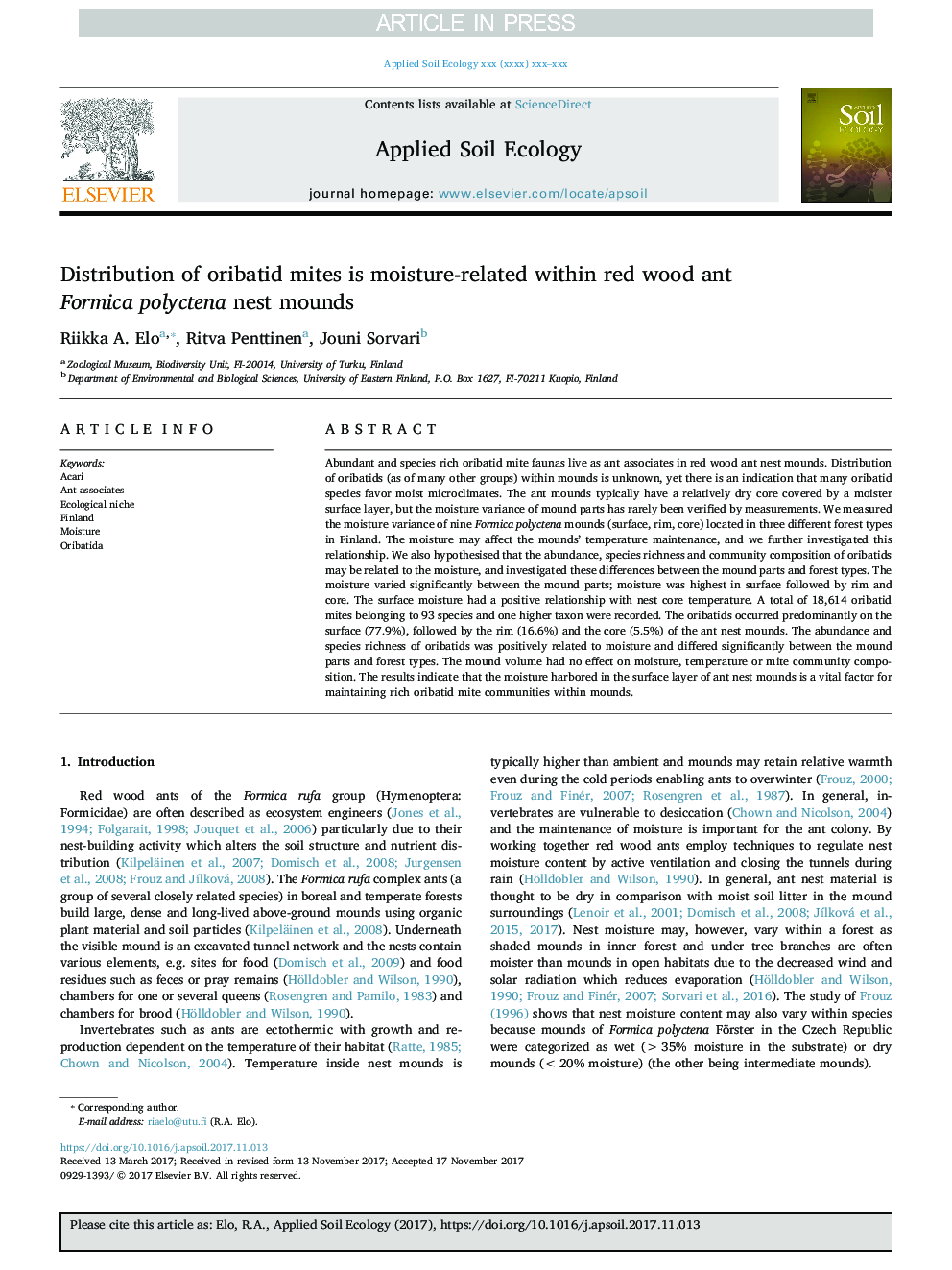| Article ID | Journal | Published Year | Pages | File Type |
|---|---|---|---|---|
| 8846787 | Applied Soil Ecology | 2018 | 8 Pages |
Abstract
Abundant and species rich oribatid mite faunas live as ant associates in red wood ant nest mounds. Distribution of oribatids (as of many other groups) within mounds is unknown, yet there is an indication that many oribatid species favor moist microclimates. The ant mounds typically have a relatively dry core covered by a moister surface layer, but the moisture variance of mound parts has rarely been verified by measurements. We measured the moisture variance of nine Formica polyctena mounds (surface, rim, core) located in three different forest types in Finland. The moisture may affect the mounds' temperature maintenance, and we further investigated this relationship. We also hypothesised that the abundance, species richness and community composition of oribatids may be related to the moisture, and investigated these differences between the mound parts and forest types. The moisture varied significantly between the mound parts; moisture was highest in surface followed by rim and core. The surface moisture had a positive relationship with nest core temperature. A total of 18,614 oribatid mites belonging to 93 species and one higher taxon were recorded. The oribatids occurred predominantly on the surface (77.9%), followed by the rim (16.6%) and the core (5.5%) of the ant nest mounds. The abundance and species richness of oribatids was positively related to moisture and differed significantly between the mound parts and forest types. The mound volume had no effect on moisture, temperature or mite community composition. The results indicate that the moisture harbored in the surface layer of ant nest mounds is a vital factor for maintaining rich oribatid mite communities within mounds.
Related Topics
Life Sciences
Agricultural and Biological Sciences
Ecology, Evolution, Behavior and Systematics
Authors
Riikka A. Elo, Ritva Penttinen, Jouni Sorvari,
